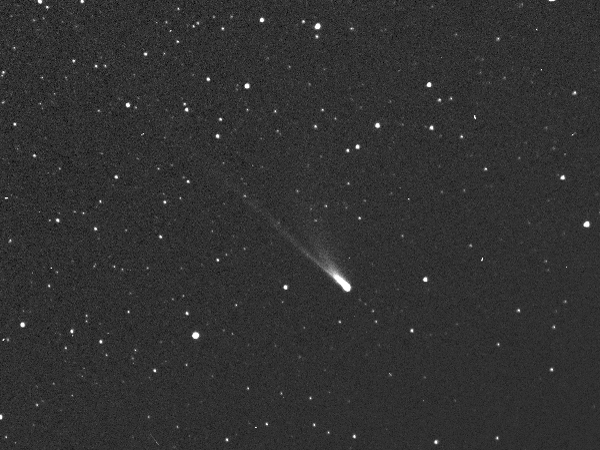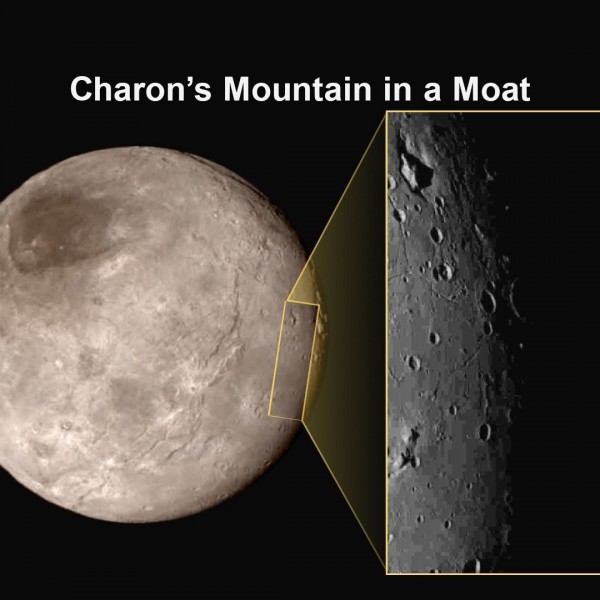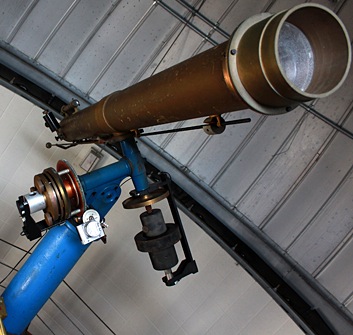
View, from Slobozia, Romania, of the "Blue Moon" on 2012 August 31.
(Image Source: Wikipedia.org)
By Glenn A. Walsh
Reporting for SpaceWatchtower
This year, the month of July
has a second Full Moon, the first occurring on July 1. Hence, Friday's Full Moon is also a so-called
“Blue Moon.”
The Full Moon / “Blue Moon” occurs on Friday Morning, 2015 July 31, at 6:43 a.m. Eastern Daylight Saving Time (EDT) / 10:43 Coordinated Universal Time (UTC).
There are, now,
two definitions which classify a “Blue Moon.” The common and more
popular definition, although not the original definition, is the
second of two full moons in a calendar month. This is the definition
used for today's “Blue Moon.”
The second
definition of a “Blue Moon,” which was the original and more
classical definition, is the third Full Moon in a calendar season
which has four full moons. Each calendar season usually has only
three full moons.
The last time we
had a “Blue Moon” by the classical definition was on 2013 August
20.
Of course, by neither definition does the Moon actually appear in any shade of blue. Only during major volcanic activity, when the atmosphere includes a lot of volcanic ash and dust, might the Moon seem to have a blue tint--and, this could be any phase of the Moon, not just a Full Moon.
The reason, the
third Full Moon in a season with four full moons was called a "Blue
Moon," was so that the nicknames normally given to the three
full moons of a season by the Native Americans, and later adopted by
farmers who immigrated to America from Europe, could remain
consistent for that particular season. In the 19th century, the Maine
Farmers' Almanac started listing "Blue Moons," as an
aid to farmers.
In March of 1946, Sky and Telescope Magazine misinterpreted the classical "Blue Moon" definition, by interpreting the 1937 Maine Farmers' Almanac as promoting eleven months with one full moon and one month with two full moons. Hence, started the more popularly-known definition of a "Blue Moon" being the second Full Moon in a calendar month. The daily radio program, StarDate, found the 1946 misinterpretation and popularized it in their broadcast of 1980 January 31.
Is one "Blue Moon" definition better than another? Folklorist Phillip Hiscock of Memorial University of Newfoundland wrote of the new definition in his article "Folklore of the 'Blue Moon'," for the 1993 December issue of the International Planetarium Society's quarterly journal Planetarian: "Old folklore it is not, but real folklore it is."
In March of 1946, Sky and Telescope Magazine misinterpreted the classical "Blue Moon" definition, by interpreting the 1937 Maine Farmers' Almanac as promoting eleven months with one full moon and one month with two full moons. Hence, started the more popularly-known definition of a "Blue Moon" being the second Full Moon in a calendar month. The daily radio program, StarDate, found the 1946 misinterpretation and popularized it in their broadcast of 1980 January 31.
Is one "Blue Moon" definition better than another? Folklorist Phillip Hiscock of Memorial University of Newfoundland wrote of the new definition in his article "Folklore of the 'Blue Moon'," for the 1993 December issue of the International Planetarium Society's quarterly journal Planetarian: "Old folklore it is not, but real folklore it is."
More on Friday's Blue Moon (NASA):
Link >>> http://science.nasa.gov/science-news/science-at-nasa/2015/27jul_bluemoon/
More on a "Blue Moon":
Link 1 >>> http://earthsky.org/space/when-is-the-next-blue-moon
Link 2 >>> http://en.wikipedia.org/wiki/Blue_moon
More on the Full Moon: Link >>> http://en.wikipedia.org/wiki/Full_moon
Related Blog Posts ---
"Today's "Black Moon."" 2015 Feb. 18.
Link >>> http://spacewatchtower.blogspot.com/2015/02/todays-black-moon.html
"'Blue Moon' Tuesday Night." 2013 Aug. 20.
Link >>> http://spacewatchtower.blogspot.com/2013/08/blue-moon-tuesday-night.html
"Will Friday's 'Blue' Moon be Blue?" 2012 Aug. 30.
Link >>> http://spacewatchtower.blogspot.com/2012/08/will-fridays-blue-moon-be-blue.htmlSource: Glenn A. Walsh Reporting for SpaceWatchtower, a project of Friends of the Zeiss.
Want to receive SpaceWatchtower blog posts in your inbox ?
Send request to < spacewatchtower@planetarium.cc >..
gaw
Glenn A. Walsh, Project Director,
Friends of the Zeiss < http://buhlplanetarium.tripod.com/fotz/ >
Electronic Mail - < gawalsh@planetarium.cc >
SpaceWatchtower Blog: < http://spacewatchtower.blogspot.com/ >
Also see: South Hills Backyard Astronomers Blog: < http://shbastronomers.blogspot.com/ >
Barnestormin: Writing, Essays, Pgh. News, & More: < http://www.barnestormin.blogspot.com/ >
About the SpaceWatchtower Editor / Author: < http://buhlplanetarium2.tripod.com/weblog/spacewatchtower/gaw/ >
SPACE & SCIENCE NEWS, ASTRONOMICAL CALENDAR:
< http://buhlplanetarium.tripod.
Twitter: < https://twitter.com/spacewatchtower >
Facebook: < http://www.facebook.com/pages/
Author of History Web Sites on the Internet --
* Buhl Planetarium, Pittsburgh:
< http://www.planetarium.
* Adler Planetarium, Chicago:
< http://adlerplanetarium.
* Astronomer, Educator, Optician John A. Brashear:
< http://johnbrashear.tripod.com >
* Andrew Carnegie & Carnegie Libraries:
< http://www.andrewcarnegie.
* Civil War Museum of Andrew Carnegie Free Library:
< http://garespypost.tripod.com >
* Duquesne Incline cable-car railway, Pittsburgh:
< http://inclinedplane.tripod.
* Public Transit:
< http://andrewcarnegie2.tripod.





